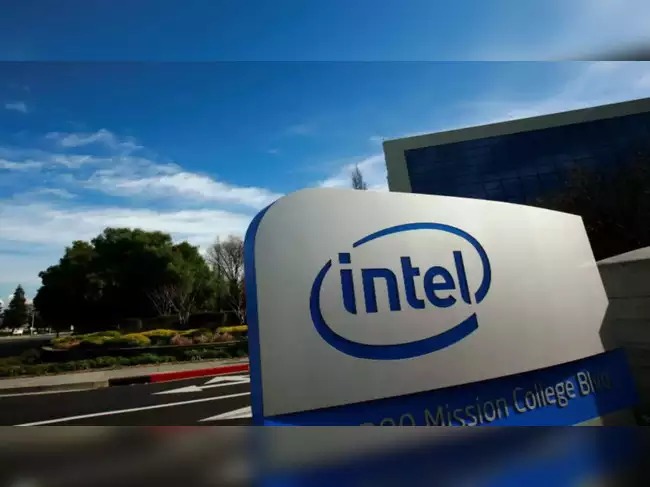In the ever-evolving landscape of technology, mergers and acquisitions often capture headlines, prompting speculation and debate among industry analysts, investors, and consumers alike. Recently, rumors have circulated regarding Apple potentially acquiring Intel, a tech giant known for its semiconductor innovations. This article delves into the validity of these rumors, the implications of such a deal, and the broader context within the technology sector. Founded in 1976, Apple has established itself as a leader in consumer electronics, software, and digital services. With iconic products like the iPhone, iPad, and Mac, Apple’s influence extends beyond hardware into services like Apple Music, iCloud, and the App Store. Over the years, Apple has transitioned to designing its own chips, such as the M1 and M2 series, which power its latest devices. This strategic move aims to enhance performance, efficiency, and integration across its product ecosystem. Intel, established in 1968, is one of the largest semiconductor manufacturers globally, known primarily for its microprocessors. The company’s products power countless computers and servers, playing a critical role in the tech infrastructure of various industries. However, in recent years, Intel has faced significant challenges, including delays in product launches and increasing competition from companies like AMD and ARM-based processors. The rumors of a potential acquisition began circulating following Intel’s announcement of strategic restructuring to focus on its core semiconductor business amid declining market shares. Analysts speculated that Apple, already working on its own silicon, might consider acquiring Intel to bolster its chip-making capabilities and secure a steady supply of components. The potential synergies between Apple’s software ecosystem and Intel’s hardware expertise fueled further speculation. In the past few months, various financial news outlets reported that discussions were taking place behind closed doors. Analysts pointed out that such an acquisition could provide Apple with access to Intel’s vast patent portfolio, advanced manufacturing technologies, and seasoned workforce, allowing it to accelerate its chip development timeline. One of the primary concerns in evaluating the feasibility of an Apple-Intel deal is the financial implications. Intel’s market capitalization is substantial, typically hovering around $200 billion, while Apple stands as one of the most valuable companies globally, with a market cap exceeding $2 trillion. While Apple certainly has the financial resources to pursue an acquisition, the investment would be significant.
Moreover, analysts would need to consider the return on investment. Would acquiring Intel provide Apple with a competitive edge substantial enough to justify the expense? Apple’s focus has been on integrating vertically; acquiring Intel could help eliminate reliance on third-party suppliers, enhancing product development and innovation. Any acquisition of this magnitude would attract scrutiny from regulators concerned about monopolistic practices and the consolidation of power in the tech industry. Given the growing concerns about big tech’s influence, Apple would need to navigate a complex regulatory environment that could delay or derail the acquisition process. Corporate culture plays a crucial role in the success of mergers and acquisitions. Apple is known for its innovative, design-centric culture, whereas Intel has historically focused on engineering and manufacturing excellence. Integrating these distinct cultures could pose challenges, impacting employee morale and productivity. If Apple were to acquire Intel, one of the most immediate benefits would be the enhancement of its chip development capabilities. Intel has decades of experience in semiconductor manufacturing, and access to its resources could expedite Apple’s efforts in creating more advanced processors. This could lead to improved performance in future devices and give Apple a significant edge over competitors who rely on external chip suppliers. Acquiring Intel could strengthen Apple’s position in the competitive landscape. As companies like Samsung and Google invest heavily in their own chip development, having a robust semiconductor division would allow Apple to maintain its competitive advantage in hardware performance and energy efficiency. An acquisition could also enable Apple to diversify its product offerings. Intel’s technology has applications beyond consumer electronics, including in data centers, artificial intelligence, and the Internet of Things (IoT). By leveraging Intel’s expertise, Apple could explore new markets and expand its product portfolio. Despite the potential advantages, several factors could deter Apple from pursuing an acquisition of Intel. Apple has demonstrated a strong commitment to in-house chip development, evidenced by its successful transition to Apple Silicon. The company may prefer to continue developing its own chips rather than acquiring Intel and integrating a legacy business model. This focus on self-reliance could outweigh the potential benefits of an acquisition. Acquisitions often come with risks of disruption, especially in a rapidly changing industry like technology. Apple might be hesitant to disrupt its existing supply chains and chip development processes, particularly when its current strategy is yielding positive results. Apple may consider alternative strategies, such as forming strategic partnerships with Intel or other semiconductor companies, instead of a full acquisition. Collaborations could provide access to needed technologies without the complexities and risks associated with mergers. As of now, the rumors of Apple acquiring Intel remain speculative. While there are compelling arguments on both sides, the decision ultimately hinges on strategic alignment, financial considerations, and the evolving dynamics of the technology landscape. The relationship between Apple and Intel is pivotal, as both companies continue to navigate the complexities of modern computing. Whether through an acquisition or continued collaboration, the future will undoubtedly be shaped by the interplay of innovation, competition, and strategic vision. As technology continues to advance at a breakneck pace, the industry will be watching closely to see if Apple and Intel take any definitive steps toward a potential partnership or acquisition. For now, consumers and analysts alike can only speculate on what this partnership could mean for the future of computing technology.

